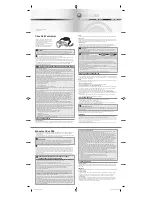
TC1796
Peripheral Units (Vol. 2 of 2)
Micro Link Interface (MLI)
User’s Manual
23-21
V2.0, 2007-07
MLI, V2.0
23.1.3.1 Handshake Signals
The synchronous serial frame transfer from an MLI transmitter to an MLI receiver is
based on the following 4 signals (the MLI protocol only defines the signal transitions, but
neither the signaling level nor the driver characteristics):
•
Shift clock CLK:
This signal is used as serial shift clock that is generated by the transmitter during the
complete frame transfer (TVALID is active) and until the end of ready delay time.
Signal TCLK can also be generated while no frame is transferred. In this case, the
receiving controller can use the incoming RCLK receiver signal as base for its internal
clock generation.
The transmitter signals are always referring to the rising edge of TCLK, so TREADY
is sampled and the output signals TDATA and TVALID are changing with the rising
edge of TCLK.
The MLI receiver actions refer to the falling edges of its RCLK input. The receiver
samples the RVALID and RDATA signals and outputs its RREADY line with the
falling edges of RCLK.
•
Shift data DATA:
This signal represents the transmit data TDATA transferred from the MLI transmitter
to the MLI receiver input RDATA. Changes on transmitter side take place with rising
edges of TCLK, whereas sampling on the receiver side takes place with falling edges
of RCLK.
•
Transmitter valid handshake VALID:
This signal indicates the start and the end of each frame. It is active (1-level) during
a frame transmission and passive (0-level) while no frame is transferred. Changes of
TVALID on transmitter side take place with rising edges of TCLK, whereas sampling
of RVALID on the receiver side takes place with falling edges of RCLK.
An activation of TVALID to start a new frame can only take place if TREADY is 1.
•
Receiver ready handshake READY:
This signal indicates that the receiver is ready for a data transfer. Additionally, this
line is used to indicate reception errors (parity error indication). Changes of RREADY
on receiver side take place with falling edges of RCLK, whereas sampling of
TREADY on the transmitter side takes place with rising edges of TCLK.
23.1.3.2 Error-free Handshake
A transmission can be started by an MLI transmitter when the MLI receiver is ready to
receive data indicated by RREADY = 1 by the receiver. When the MLI transmitter
detects TREADY = 1 and starts its transmission, TVALID is asserted to 1 level while a
frame transfer is in progress. When the MLI receiver has detected the 0-to-1 transition
of the RVALID signal it will de-assert RREADY back to 0 (transmission start
acknowledged by receiver). At the end of the frame transmission, the MLI transmitter
also de-asserts signal TVALID back to 0 and checks if the TREADY signal is at 0 level,
















































